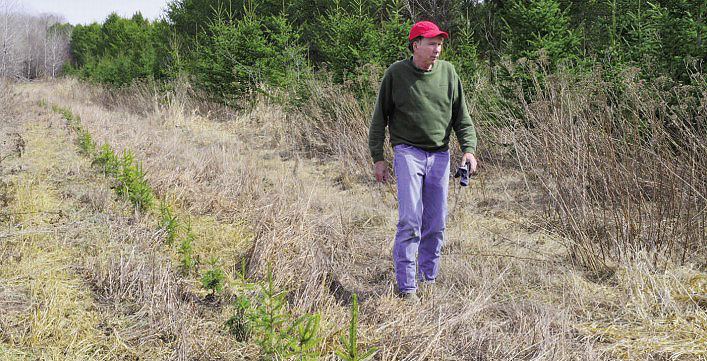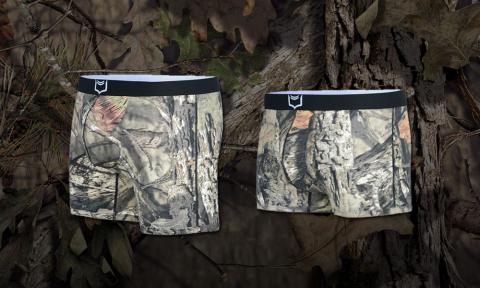Bill Marchel | Originally published in GameKeepers: Farming for Wildlife Magazine. To subscribe, click here.

About two decades ago I fulfilled a longtime dream and purchased hunting property in central Minnesota. The land was not ideal, but it was all I could afford. My property is bordered on two sides by county roads. Although at the time I was green when it came to managing land for wildlife, a lifetime passion for the outdoors had taught me a few things. First and foremost, I knew I needed to provide deer and other wildlife seclusion from the nearby roads, and the sooner I started a “visual screen project” the quicker I would obtain results.
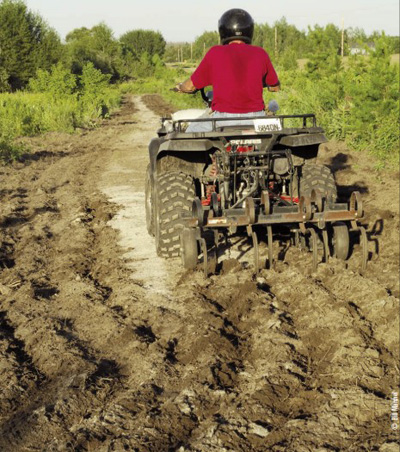
trees a nicely prepared bed to begin life. The author also
likes to plant a cover crop of oats around the trees to help
keep weeds at bay.
It's no secret to land managers that deer—especially mature bucks—and other wildlife like turkeys and waterfowl feel more secure when a visual barrier separates them from human activity. A sight screen not only helps keep wildlife relatively calm—and thus more likely to move during daylight—it also protects food plots and other management projects from the prying eyes of sightseers and potential poachers. And that's all good.
So I ordered a few thousand evergreen tree seedlings and went to work. Initially, I planted six species of trees for three reasons: One, by implementing an assortment of evergreen varieties I would be safe if, for some reason, a disease would ravage a particular species; two, I knew deer would browse some varieties of evergreens, particularly during a severe winter, and I would be able to analyze first hand which of the six tree species deer preferred and which species they would leave alone; and three, planting a variety of species would allow me to monitor which would grow well in the soils that constitute my land.
The six species of evergreens I chose to plant were jack pine, white pine, red pine, balsam fir, white spruce and eastern white cedar. I purposely avoided planting eastern red cedars because I knew the species was host to cedar-apple rust, a fungal disease that could affect future apple orchards I planned to implement. In addition, I was aware jack pines and white pines would be especially attractive to hungry whitetails. I was correct. After several years most of my white pines had been destroyed, and the jack pines in some locations were severely damaged.
What I didn't anticipate was the tree loss caused by pocket gophers. In some locations, the underground varmints decimated my trees, especially the red pines. The buck-toothed critters killed my trees by chewing through the roots, and not just my young trees, but even trees as old as 10 years. Trapping the gophers helped ease the problem, but did not eliminate it. I would soon find controlling pocket gophers is a time consuming and never ending task.
After roughly 20 years of trial and error, I now plant white spruce trees almost exclusively as visual barriers, for several reasons. Over the years, I found deer pretty much leave them alone, as do the pocket gophers. White spruces are hardy and adapt to a variety of soil conditions. Perhaps best of all, the attractive, cone-shaped growth is extremely thick right down to the ground, whereas some of the pine species tend to have thinner lower branches, especially as they age.
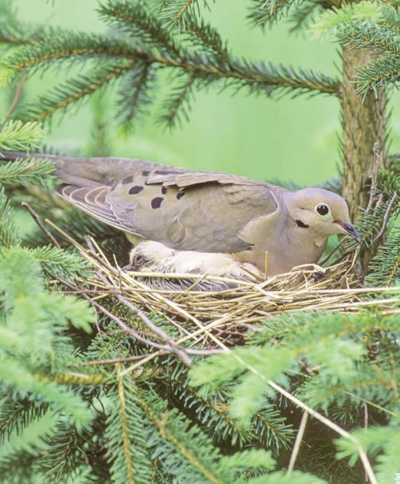
barriers. They create living spaces for many game and
nongame wildlife species.
Just because I've had success planting white spruce trees as sight screens here in the North, doesn't mean they are the best option for other parts of the country. I recommend land managers contact state and county foresters and tree nurseries in their part of the country to learn the best options for visual barriers. And, since managing land for deer and other wildlife has become very popular these days, companies specializing in such practices have sprouted all over the United States, just like Nativ Nurseries. They can provide you with advice on what to plant in your location, some for a fee, of course. Heck, some businesses will even plant the trees for you if you so choose.
When I plant evergreen trees as a visual barrier, I space them relatively close together. I'm no spring chicken. The idea of waiting many years for an evergreen screen to be effective is, well, not an option for me. I normally space the trees only three or four feet apart. As the years go by and my trees begin to crowd each other I can always remove, say, every other tree, a better alternative for me than planting them farther apart from the start. If you plant your vision barrier trees more spaced out, be sure to stager the trees in the next row, to ensure you fill in the gaps. Three or four rows are generally sufficient, but a well-planned-out barrier can contain as few as two rows.
Over the years, I've learned I get better success with my evergreen barriers if I prepare the soil ahead of time. So, in late summer or early fall I cultivate the soil so I'm ready to plant in a weed-free environment the next spring. At the same time I also fertilize and lime the site if necessary. Then, on the day of spring planting I'll seed the prepared soil with oats to use as a cover crop. The oats keep the weeds down, giving my newly planted evergreens a head start. This method has worked well for me. I normally experience a survival rate of about 95 percent.
In recent years, I've switched from planting evergreen tree seedlings to two year-old bare root transplants. A two-year-old white spruce transplant typically is about 14 inches tall. I've found these transplants are hardier than seedlings, and, more importantly, grow faster.
While waiting for a sight screen to grow one can always use annual crops to temporarily act as a barrier. A dozen rows of corn will work, as will sunflowers and grain sorghum, all which will also provide a food source for deer and other wildlife.
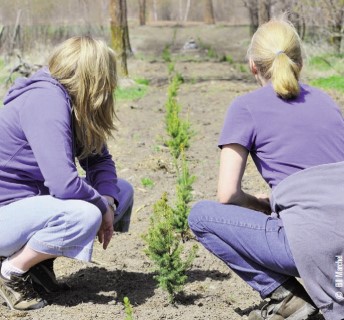
on your property. Contact state or county foresters and
tree nurseries in your part of the country to learn the best
options for visual barriers.
In recent years, the use of Egyptian wheat as a visual barrier has become popular with land managers. Egyptian wheat grows 10 feet tall, or even taller, in one growing season, and although not a great food source for deer it does produce seeds attractive to turkeys, doves and other birds.
Mossy Oak BioLogic sells a product made specially for creating a visual screen around food plots, or even blind locations. The product is called Blind Spot. I have never tried Blind Spot but I understand it performs as advertised.
As I mentioned earlier, perhaps the best plan for a visual barrier is to plant evergreens now and use annual plantings while waiting for the evergreens to grow to the desired height and thickness.
My evergreen plantings have provided much more than mere visual screens. Many species of songbirds, as well as game species like mourning doves, nest in my trees and use them as thermal cover on cold and windy winter days. At night, they roost in them as well.
Remember too, everyone likes evergreen trees, so the potential value of my land has increased. Years ago, I planted an evergreen barrier on the north and west sides of my house and those trees—now about 25 feet tall—act not just as a sight barrier to a nearby road, but also a wind barrier, which saves on my heating bill when Old Man Winter unleashes his fury. Over the years I have planted evergreen barriers on the interior of my property, too. They further afford deer and other wildlife a sense of security, and also allow me to approach hunting locations unseen. Evergreen barriers make great locations for ground blinds while young, and tree stand locations as they mature.
I know what you are thinking. You don't want to wait five years or more for an evergreen screen to become effective. Well, remember this: Time flies, so why wait until next year to plant your evergreen screen? A wise man (a gamekeeper, perhaps) once said the best time to plant a tree was 10 years ago. The next best time is today.
